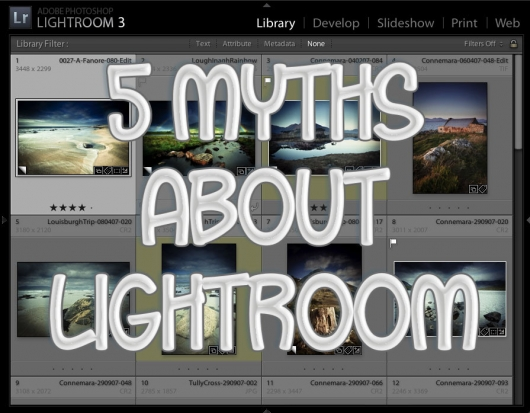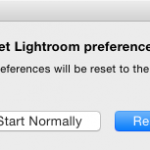
While Lightroom is quite a nifty program, not everything people think about Lightroom is true! Here’s some myths I see cropping up.
Myth #1: Lightroom can backup everything.
Er… No. Lightroom does have a backup routine that can run daily, weekly, monthly, or on next start. All it backs up is the currently opened catalog, nothing else. No photos, no settings or even preferences. If you want your photos backed up, you’ll need to use an external program like SyncToy on PC or Chronosync on Mac. Of course, if you’re savvy with command lines, you can use rsync. Matt Dawson has a cool Lightroom Plugin for backing up presets and preferences too, called Config Backup.
Myth #2: Lightroom catalogs shouldn’t be above 10,000 photos
I saw this on LinkedIn. Because Lightroom uses a database to manage photos, each new photo makes the catalog larger. As catalogs get larger, they do get slower. That said 10,000 images is a drop in the bucket. I’m currently running with 125,000 images in my catalog, the majority of them from the Canon 5DMKII and I don’t see any particular speed bottlenecks. It’s also no slower than than at 75,000. Lightroom author, Richard Earney, knows people with 500,000 image Catalogs! One trick to help keeping larger catalogs nippy is to regularly use the Optimize command, in the File menu.
Myth #3: I can delete my original photos when I’ve imported them into Lightroom.
Yikes! When images are imported into Lightroom, it creates a preview of the image. Each time you view that photo, you’re actually looking at the preview, not the original image. If you delete the original file, it’s gone! Don’t. Do. It. That said, if you used ‘Copy’ to import the file into Lightroom, you can delete the original image from the original location, for instance, off your memory card.
Myth #4: I need to duplicate my photo to get different looks
Fortunately this isn’t true. Lightroom has a cool feature called Virtual Copies that let you make a new version of without duplicating it. Basically Lightroom creates a new preview and lets you apply settings to it, independently of the original file. You can make as many virtual copies as you like. Virtual Copies are only stored in the Catalog though, and not in XMP files (the sidecar files you can optionally use to store settings). Use a plugin like Snapshotter to make them into Snapshots, which are stored in XMP.
Myth #5: Lightroom Stacking is great for Panoramas and HDR
I really, really, wish this were true. Lightroom does have a stacking feature, but it’s very limited in design. Stacking in Lightroom is designed for putting similar images together and then having the best image on top. When the Stack is closed, any changes, be they settings or metadata changes, only apply to the top image. So if you have a sequence for a Panorama, or for HDR, and need to apply metadata or develop settings, Stacking is really not a useful option. I’d recommend using a Collection Set called Panorama or HDR and create Collections for each one instead.










